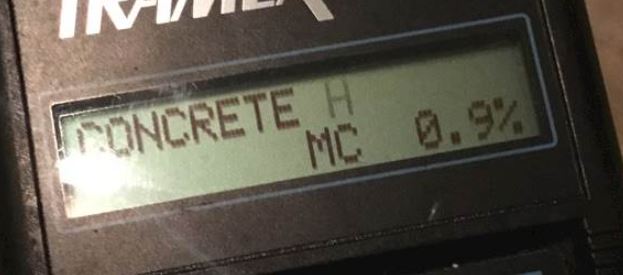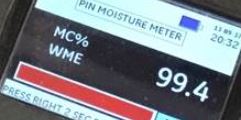Damp Meter & Moisture Surveys
Damp Meters / Moisture Meters
Damp meter or moisture meters come in various forms, with different capabilities – designed for different use. Each has their own purpose and shows different information related to moisture within materials, under them or in the air around (most commonly Relative Humidity, which we will explain later).
A good damp meter can help find leaks in walls, leaks in floors, leaks in ceilings with water damage and leaks in roofs.
They are a very useful and powerful tool providing clues to help determine the location of a water leak, even in hidden locations – such as slab leaks within concrete floors. However, they are not the only leak detection tool you need!
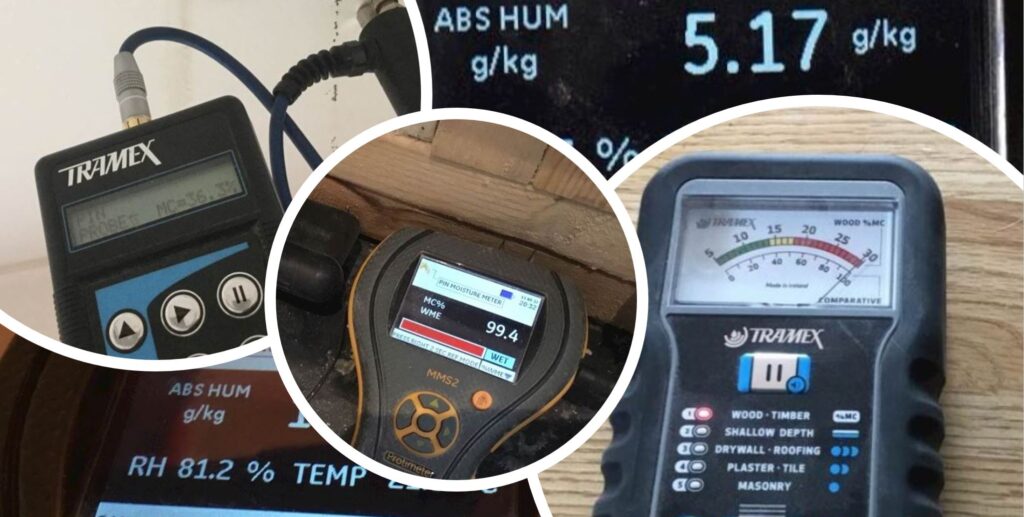
TOOLS AND METHODS FOR FINDING WATER LEAKS
What is Moisture Mapping?
Moisture mapping is just one of the methods used by a competent Leak Detection Technician when carrying out a Leak Detection Survey. Used correctly, they are a very powerful tool to help track and trace leaks in the structure of a property. It is a key part of the trace and access leak detection process. They map out moisture levels across a property, highlighting variances that occur. This can be used to understand problems with damp on walls too or things such as penetrating damp. As well as moisture meters, additional things such as infrared thermometers can be useful.
Very importantly, its necessary to distinguish between ambient / regular moisture for a property from abnormal (elevated) readings. Most commonly this is done using moisture meters.
In a nutshell, moisture mapping using these meters helps the technician to not only focus in on areas of elevated moisture but also the extent or levels of moisture in the structure of the building.
If water leaks are left, over time they can can cause issues and what is called ‘secondary damage’ to other parts of the building or contents within the property. They can also raise the moisture levels / humidity in the air which can lead to mould growth which can cause a health risk to occupants.
TYPES OF MOISTURE METERS
Pin vs Pinless Meters
There are many different types of damp meters, made by many different manufacturers. However, they generally fall into one of three categories – pinned (resistance) meters, pinless (impedence) meters and psychometric moisture meters. Each has it’s own purpose and sometimes they can be combined into the same meter. These units, although expensive (a good damp meter can cost hundreds of pounds, sometimes thousands) are very versatile. We have a detailed guide to pinless moisture meters with a demonstration.
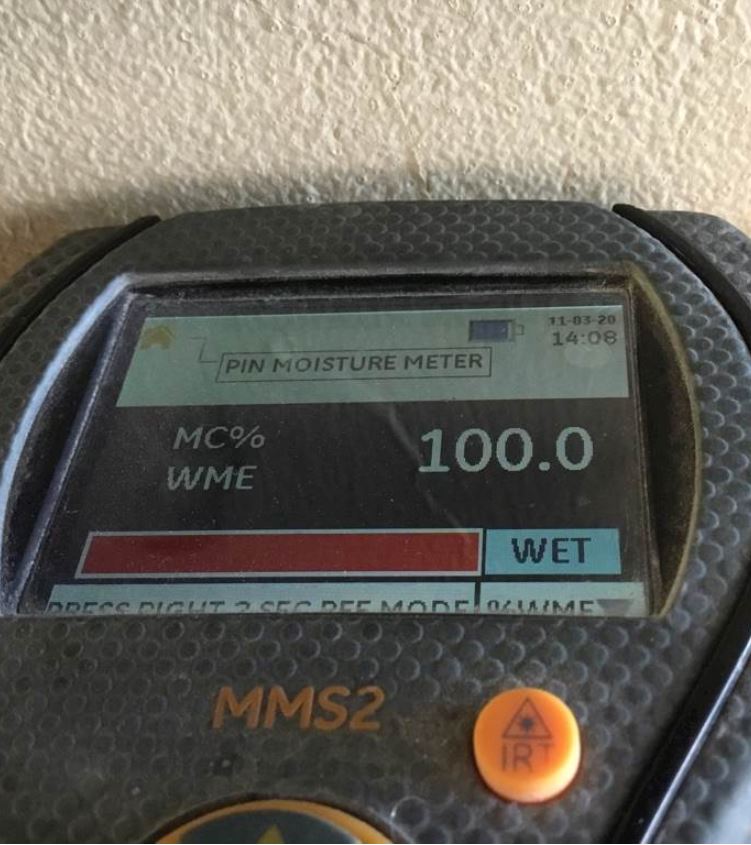
MOISTURE MEASURMENTS
Damp Meter Readings?
A good damp meter will measure a number of metrics to gauge moisture in a building, but what do they all mean? What is Relative Humidity? What is moisture content? What does WME and GPK mean?
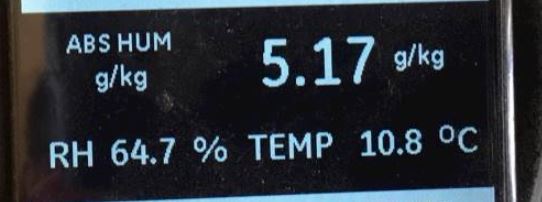
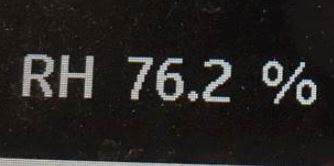
Relative Humidity
What is Relative Humidity and how is it defined? What are normal humidity levels?
WHAT IS RELATIVE HUMIDITY?
Moisture Content
What is Moisture Content? When is it used and what is normal levels of moisture content?
WHAT IS MOISTURE CONTENT?
Wood Moisture
What’s Wood Moisture Equivalent? Why is it used and what are normal levels for timber?
WHAT IS WME?
WHERE DAMP / MOISTURE METERS BE USED TO MEASURE DAMP
Damp meters for walls, floors and wood etc.
Moisture meters can be used for measuring damp in the following places:
- Damp in brick walls
- Damp in plaster / plasterboard walls
- Damp in wooden floors, tiled floors, stone floors and under vinyl floors
- Damp in floorboards and wooden joists
- Damp in ceilings
- Damp in chimney breasts
- Damp in roofs and lofts
- Damp in caravans and garages
- Damp in kitchen, bathroom and en-suite bathrooms
On the subject of damp, sometimes this comes from condensation issues – see more on our dew point charts.
- As you can see, the whole subject of damp meters is a very interesting topic and has lots of complexities. It takes a trained and experienced person to understand and interpret the moisture readings and use that information to help find leaks and assess the damage from a water leak. Different types of meters and readings are taken, tracked and compared to help give the best information possible to make decisions.
- The technology is changing and improving over time (just like building structures and materials are) so we keep on top of the latest information and trends to ensure we offer a great service to our customers. After all, we understand that your property and possessions are precious to you. We want to make sure we do all we can to deliver an excellent service to our customers.
- As for what is the best damp meter? Well that depends on what material you are measuring damp in. Although good damp meters are versatile and can be used in different places, a good leak detection engineer will utilise a variety of damp meters alongside other equipment. Together they are a very powerful aid to find leaks, even hidden ones!
- Finally, it is important to note that professional moisture meters are highly calibrated instruments and should be checked and recalibrated on a regular basis to check they are giving correct readings. This is very important, otherwise it could give false readings and mislead the user – this also highlights why relative readings and control reading play an important role. Being able to compare moisture readings in damp areas vs the normal conditions of a control (dry) area within the same room, if possible, is always important.
So if you need help with a water leak, speak to a professional, speak to us! We will be glad to help you.
What level of damp is acceptable?
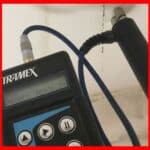
People often ask what level of damp is acceptable but there is no simple answer to this because it depends on so many things. People often get a cheap moisture meter (which may not even be appropriate for the purpose, let alone accurate!), see a number and wonder if it is high or low. First of all, professional moisture meters are far more reliable, accurate, sensitive and measure many materials (not just wood for example). Secondly, what level of damp or moisture is normal will depend on the material, where it is located, the environmental conditions around it including the age, construction and condition of the property. This is why when using a professional damp meter, an expert will look at a number of factors and, very importantly, take a number of readings (including control readings). This will be done over time too.
Are damp meters any good?

Like many products and services, damp meters come in a wide range of prices, specifications and capabilities ranging from cheap and simple devices, up to professional, versatile and calibrated devices that we use as part of our services. Cheap moisture meters or damp meters have their limitations and we would advise caution on relying on them too much, especially in important applications related to your property. That said, good damp meters are an extremely valuable and effective tool, which can also be beneficial in helping to find water leaks in your home or business.
